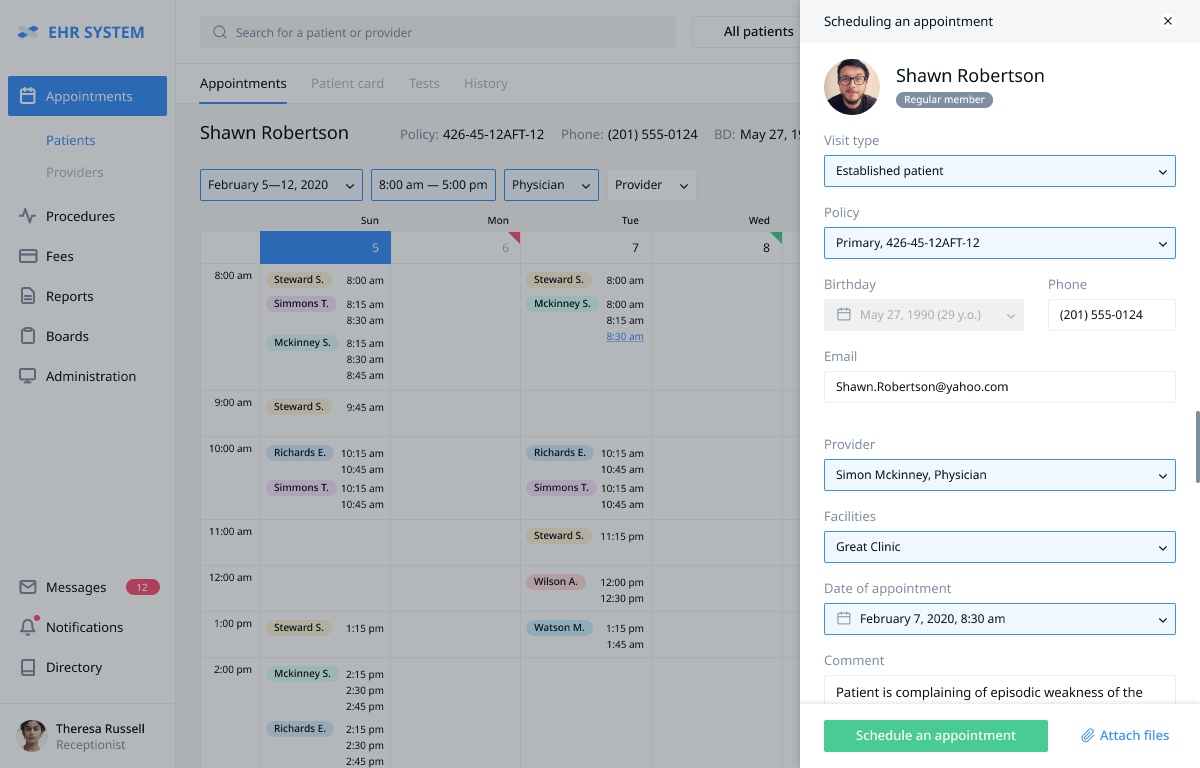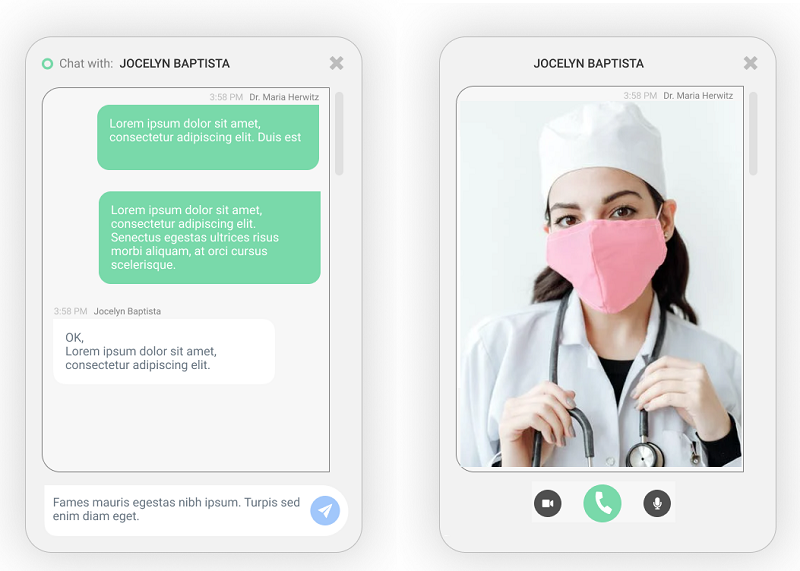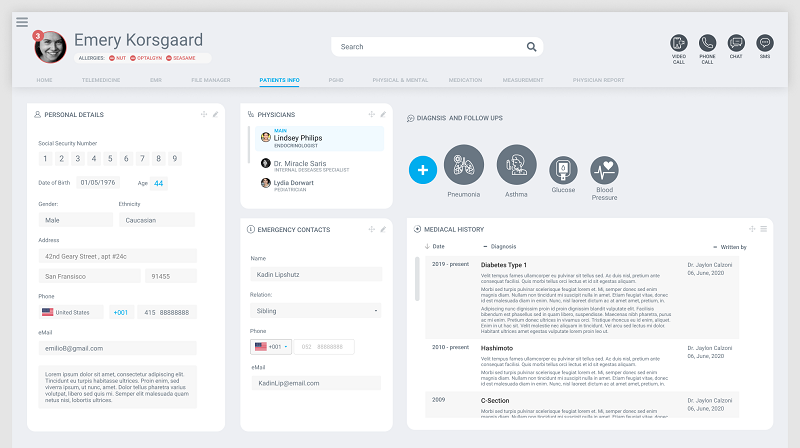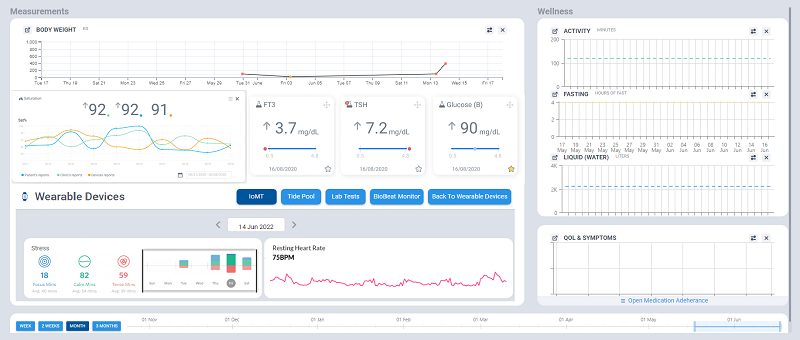A patient engagement software platform allows users to send surveys and other material for symptom tracking, as well as quality of service and patient satisfaction. It’s used by the patient and their family, and the health care team. From a technical perspective, it’s a responsive web app that works on desktop and mobile devices.
Patient Engagement Solutions
Patient engagement software is a type of health care technology that is used to improve the communication and interaction between patients and their healthcare providers. This software typically includes tools and features that allow patients to access their health information, communicate with their providers, and manage their own health care. For example, patient engagement software may include features such as electronic health records, appointment scheduling, medication management, and health tracking.
The goal of patient engagement software is to empower patients to take a more active role in their own health care, and to improve the overall quality and effectiveness of the health care they receive.
As a matter of fact, patient engagement has proved its beneficial impact on clinical results and overall patient experience.
 Example of a patient engagement dashboard by Belitsoft with mental health self-assessment, medication intake reports, questionnaires, and more activities that involve a patient into the health care process
Example of a patient engagement dashboard by Belitsoft with mental health self-assessment, medication intake reports, questionnaires, and more activities that involve a patient into the health care processDevelop an MVP version of Patient Engagement Software with Belitsoft!
- Have an extensive roadmap for your vision.
- Go through pilots.
- Deploy the instance to a cloud platform of choice.
- Get a live production version with paying customers.
- Prioritize additional features.
5 Key Patient Engagement Software Types Covering the Entire Patient Journey
Apply patient engagement solutions as stand-alone apps or add-on modules to your existing healthcare software, optimizing and automating each stage of the patient-doctor interaction:
- A patient books a doctor’s appointment online,
- A patient can choose an online visit to get assistance virtually,
- After getting assistance, a patient can see a treatment plan in a personal profile,
- A patient enters health metrics regularly, gets notified about medication intake to keep up with the treatment plan,
- A patient can learn more about their health conditions and effective care options to be able to care better for their own health.
As a result, you establish long-term patient-provider relations, bring personalized and timely medical care that is available at home, and reduce friction costs between supporting stakeholders.
1. Appointment Scheduling to Book Doctor's Visits
This type of software allows patients to schedule and manage appointments with their healthcare providers and may include features for reminders and notifications.
With appointment scheduling software, patients have 24/7 access to book appointments without calling and hanging on the line long.
Also, once an appointment is scheduled, a patient can easily update it via web or mobile-based systems if needed. This gives patients full control of the process, allowing them to arrange doctor’s visits at a time and place that works best for them.

CASE STUDY: Custom CRM database with scheduling functionality
2. Telehealth to Provide Timely Health Assistance
This type of software enables remote consultations and care, allowing patients to communicate with their healthcare providers via video or audio. Telehealth software may include features for real-time communication, as well as tools for managing and sharing health information.
The 3 options that both a doctor and a patient get through a mobile or web app are:
- Video conferencing functionality. The software must guarantee a high-quality video chat with a crisp and clear image for doctor-patient communication because the diagnostics accuracy and further treatment depend on it.
- Voice-only calls option. Some patients and situations imply a degree of anonymity. Talking to a doctor by voice helps such patients start the communication and treatment process.
- Text-based messaging systems. Built-in chat or emailing options are perfect for a quick question, medication altering or prolonging consultations, or other treatment aspects not requiring face-to-face interactions.
The benefits of using telehealth software range from re-assurance and reduced anxiety to the positive impact on consultations to a better doctor-patient relationship.

CASE STUDY: A custom patient-doctor application with video, audio, and texting functionality
3. Patients' Access to Personal Health Data
Patient access to their electronic health records has the potential to cut healthcare provision costs, and improve healthcare data visibility and quality of care, leading to better health and patient-centered outcomes.
This type of software allows patients to access and manage their health information, such as medical history, test results, and medication records. EHR software may also include features for communication and collaboration with healthcare providers.
To make it work, the medical staff creates a patient profile with personal and health data when a patient has the first visit.
When a doctor enters a treatment plan patient's profile, a patient can see its details. When checkup results appear in the EHR, a patient can see them as well.
The EHR acts as a patient portal with all the health data available, visible, and retrievable on demand. As a result, patient access to all their health information was found to improve self-reported levels of engagement and self-management, and even recovery scores.

4. Health Tracking to Manage Treatment and Report to Medical Staff
This type of software allows patients to track various aspects of their health, such as exercise, diet, and symptoms, setting health goals, and monitoring progress. Health tracking software may also include tools for medication management helping patients manage their medication regimens, including tracking when to take them, refilling prescriptions, and avoiding drug interactions.
Health tracking favors increased awareness and adherence to medication from the patient’s side.
A patient installs a mobile application that is usually integrated with a web application used by healthcare staff. So after a doctor assigns a treatment plan, it becomes visible to a patient through the mobile app.
Whatever smart devices a patient uses (for example, a fitness tracker), the app automatically receives vital measurements from a connected device thanks to IoT technology.
Other patient-generated health data can be entered manually through:
- Measurement reports with data about blood pressure, the glucose level in the blood, and others;
- Medication intake reports with data about every taken medication;
- Physical and mental health reports revealing the index of pain, anxiety, etc. calculated with the help of questionnaires).
All the data gets visible to the doctor in real time. Moreover, such an application can alert a doctor when there are deviations in the patient's measurements, in case a patient stops entering daily data or has complaints or pain.

CASE STUDY: Health tracking dashboard with patient-generated data
5. Health Education to Inform Patients & Let Them Interact
Creating a community of people challenged with different diseases to inform them about health conditions, provide helpful guidelines, establish live communication among them and help them overcome their difficulties.
A new patient registers a patient portal using the embedded form or Single-Sign-On with other medical software (EHR or health tracking app).
After registering, a patient may benefit from such helpful functions as:
- perform an advanced search across the database of materials;
- send and receive messages among users;
- express emotions with emojis;
- use forum;
- etc. depending on the requested functionality.
Such healthcare education software allows creating a network of users who come to find like-minded people, share their experiences, and support each other.

CASE STUDY: Custom health community and educational software
Why Belitsoft?
- Focus on UX design. We start working by analyzing your requirements and discussing the initial design. We focus on UX design of your healthcare software, facilitating the adoption and engaging long-term use of your product. The UI/UX, look and feel, and intuitiveness of such a patient app makes users provide great feedback.
- Scalable Architecture. We help you turn a patient app into great investment by creating a highly scalable architecture. While building your app from scratch, we use leading technologies to ensure future flexibility.
- Software development augmentation model. We provide you a dedicated software development team that can be flexed from one-three up to more people (development specialists, the project/account managers, etc.) depending on the current project needs. This is one of the key economics of outsourcing helping you save the budget. We recruit and retain experienced specialists who are motivated to get the job done.
- Effective Project Management. We set up and manage comfortable and transparent project documentation process. You get informed and engaged to the extent you want it to be, without putting an unnecessary burden on you. We arrange regular calls during heavy design and development periods. In case you prefer a different approach, we’re responsive to you.
- Take advantage of the time zone difference. Belitsoft’s development team works at building your software product while you’re sleeping. We're also available during your range of working hours.
Rate this article
Our Clients' Feedback


































Belitsoft has been the driving force behind several of our software development projects within the last few years. This company demonstrates high professionalism in their work approach. They have continuously proved to be ready to go the extra mile. We are very happy with Belitsoft, and in a position to strongly recommend them for software development and support as a most reliable and fully transparent partner focused on long term business relationships.
Global Head of Commercial Development L&D at Technicolor